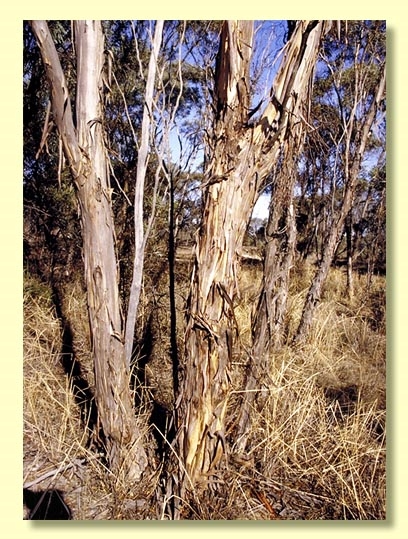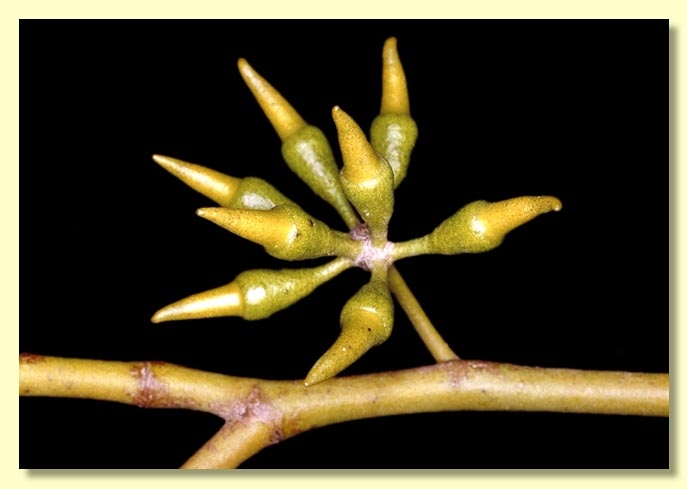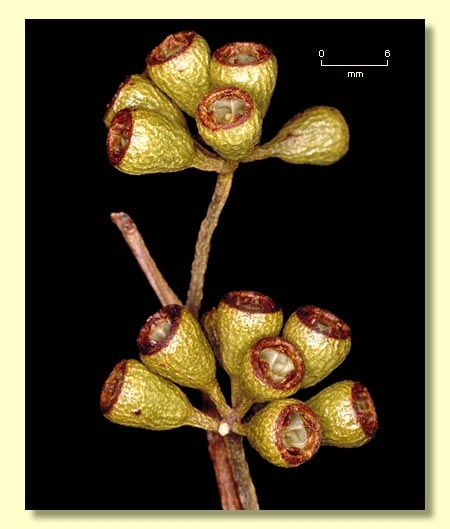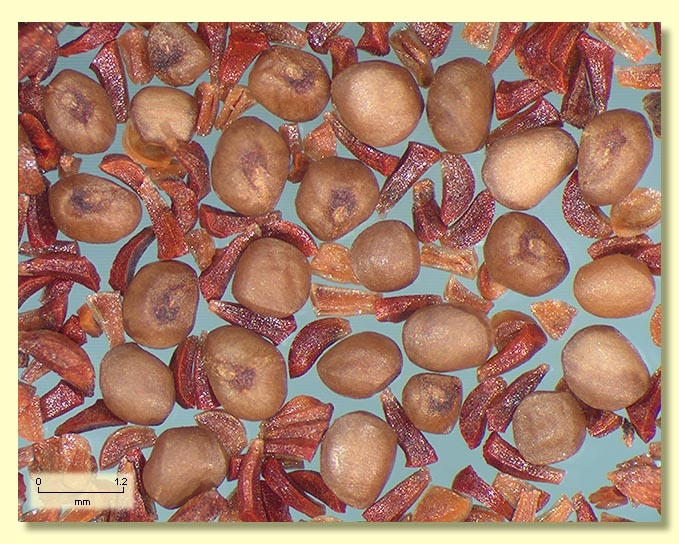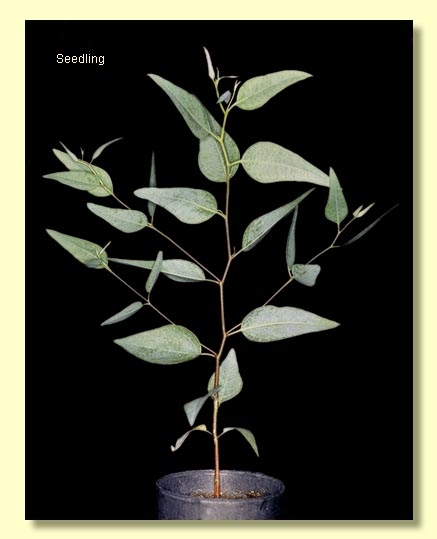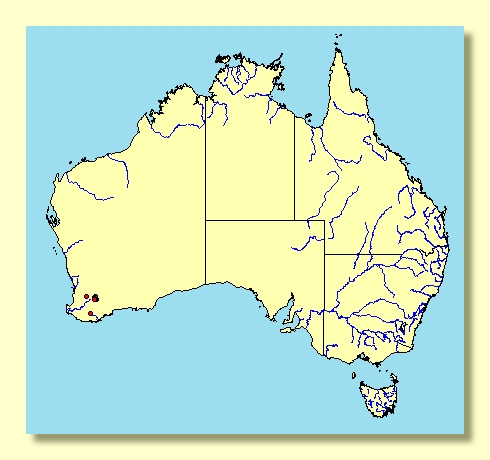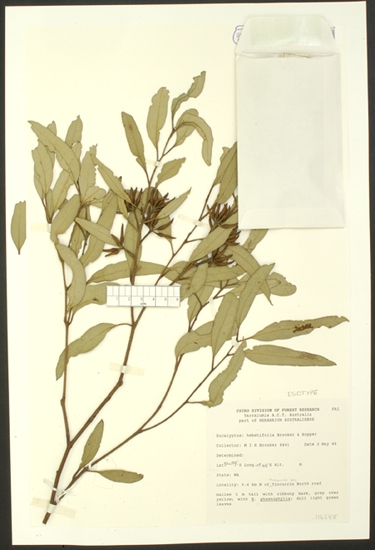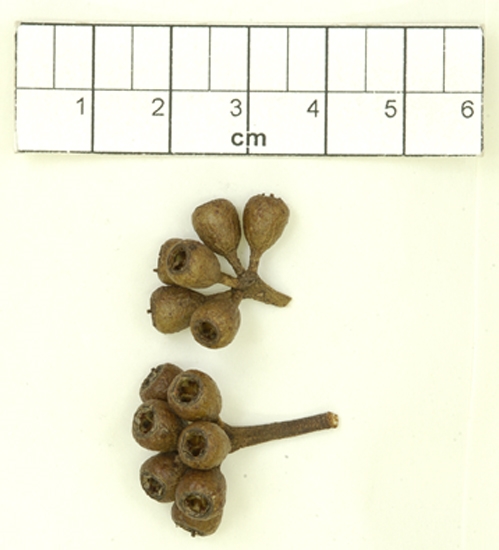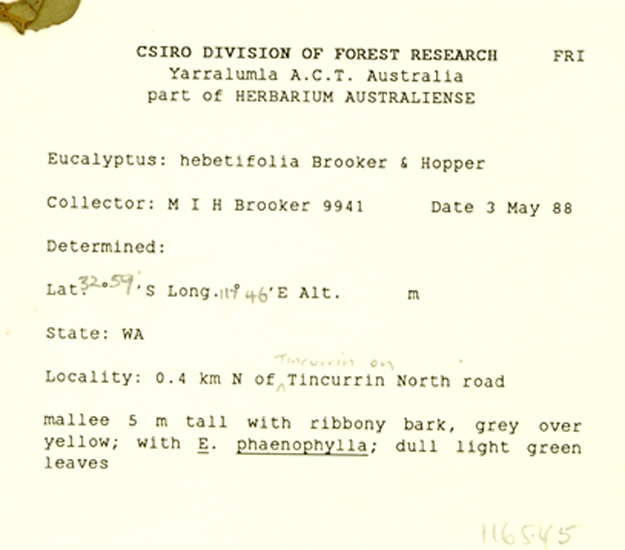Eucalyptus | Symphyomyrtus | Bisectae | Glandulosae | Levispermae | Cubiformes
Euclid - Online edition
Eucalyptus hebetifolia
Bark rough with loose grey ribbons for about half of trunk, smooth above grey and greeny brown over yellow.
Branchlets with oil glands in pith.
Juvenile growth (coppice or field seedlings to 50 cm): stems usually rounded in cross-section; juvenile leaves always petiolate, opposite for 2 or 3 nodes then alternate, 5–9.5 cm long, 1.7–5.3 cm wide, green to grey-green.
Adult leaves alternate, petioles 0.9–2 cm long; blade lanceolate, 7–9(10.5) cm long, (0.8)1–1.7(2) cm wide, base tapering to petiole, margin entire, apex pointed, concolorous, dull, blue-green becoming green by second year, side-veins greater than 45° to midrib, reticulation moderate to dense, intramarginal vein remote from margin, oil glands mostly island.
Inflorescence axillary unbranched, peduncle widens apically, 1–1.5 cm long, buds ?11 to 13 per umbel, pedicellate (pedicels 0.2–0.3 cm long). Mature buds fusiform (1–1.6 cm long, 0.25–0.4 cm wide), scar present, operculum conical, about twice the length of the hypanthium and narrower at the join, few outer stamens fully erect, most stamens variably deflexed, anthers cuboid, versatile, dorsifixed, dehiscing by longitudinal slits, style long and straight, stigma more or less blunt, locules 3, the placentae each with 4 vertical rows of ovules. Flowers creamy white to very pale yellow.
Fruit pedicellate (pedicels 0.2–0.3 cm long), barrel-shaped to obconical, 0.6–0.8 cm long, 0.5–0.6 cm wide, disc descending vertically, valves 3, near rim level.
Seeds pale brown, mid-brown or straw-coloured, (0.5)0.7–1.5 mm long, sub-spherical to cuboid, surface smooth, hilum ventral/terminal.
Cultivated seedlings (measured at ca node 10): cotyledons Y-shaped (bisected); stems rounded to square in cross-section; leaves always petiolate, opposite for 3 or 4 nodes then alternate, ovate to lanceolate, 5–9.5 cm long, 2–5.5 cm wide, dull, greenish, becoming glossy by ca node 10.
Flowering has been recorded in January.
A mallee endemic to Western Australia restricted to the southern part of the central wheatbelt around Harrismith, Wickepin and Cranbrook. The bark is loosely rough on the lower half of the stems. The adult leaves are dull, light green.
Eucalyptus hebetifolia belongs to Eucalyptus subgenus Symphyomyrtus section Bisectae subsection Glandulosae because the cotyledons are bisected, buds have an operculum scar and the branchlets have oil glands in the pith. Within this subsection E. hebetifolia is one of a group of 14 species that form series Levispermae subseries Cubiformes, characterised by having smooth almost cuboid to sub-spherical seed (not spherical), flattened peduncles that widen apically and buds that are narrowly fusiform with some stamens erect and others variably deflexed.
E. hebetifolia is distinguished from other species in series Levispermae by the combination of mallee habit, dull adult leaves, operculum narrower than the hypanthium at the join and seedling and juvenile leaves that are not scabrid nor glaucous. The related species most likely to be confused is E. phaenophylla, which can be distinguished by its glossy green leaves. E. arachnaea can be distinguished from E. hebetifolia by its longer buds, glossy adult leaves and firm rough bark.


